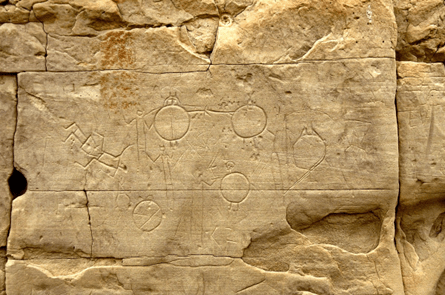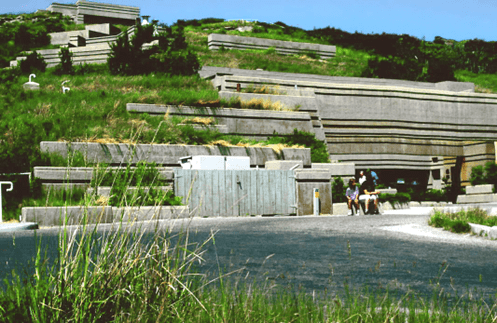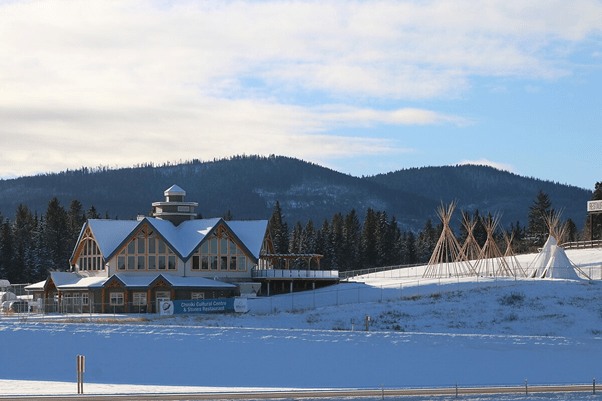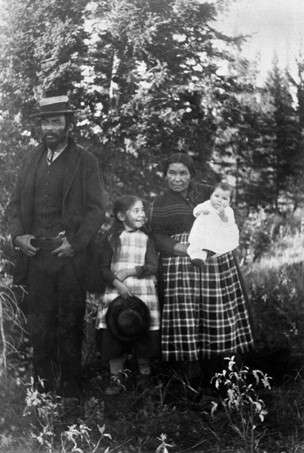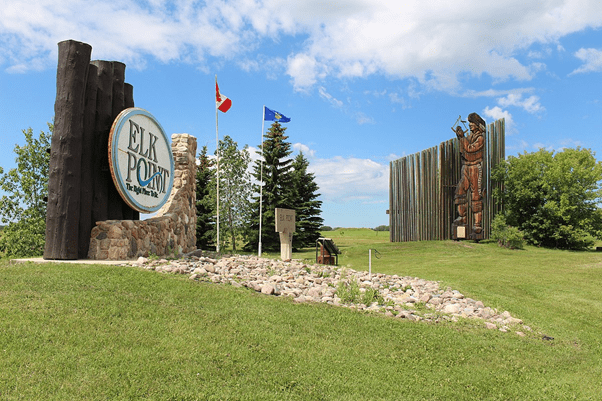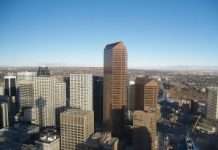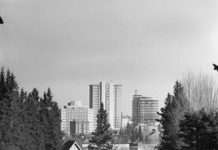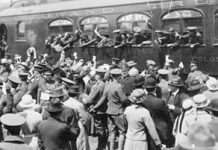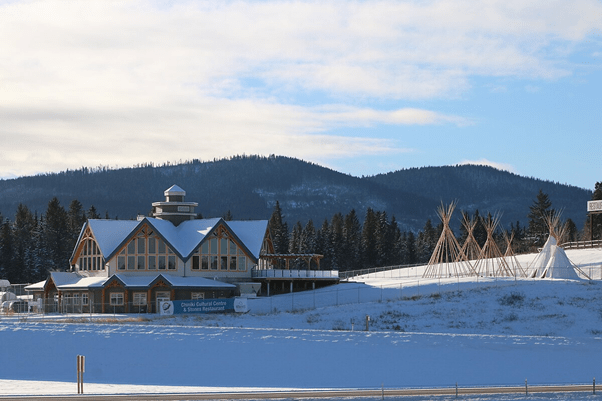
by Anthony Imbrogno, a volunteer with The Calgary Heritage Initiative Society/Heritage Inspires YYC
Ancient hunter-gatherers entered Alberta through ice-free corridors. They encountered hot springs, like Cave and Basin National Historic Site.
The earliest habitation sites contain fluted projectile points called arrowheads. Wally’s Beach on St. Mary Reservoir contains evidence of point production for hunting.
At Writing-on-Stone Provincial Park, Indigenous peoples carved the Great Plains’ greatest concentration of rock art. The shapes, people, and animals show the site’s sacredness, where spiritual guidance is sought.
At Head-Smashed-In Buffalo Jump World Heritage Site, herds were steered over a precipice, providing plentiful food and material for daily life.
Calgary was an important stop on the seasonal round following buffalo herds because prairie meets foothills along several river valleys, including the Bow’s confluence with Mohkinstsis (“elbow”). There’s a buffalo jump at Paskapoo Slopes and stone circles on Nose Hill.
Calgary’s region is home to many First Nations. Westward is Tsuut’ina Nation, who share culture and language with the Dene Nation.
Further west lies Stoney Nakoda Nation, comprising the Bearspaw, Chiniki, and Goodstoney. The name “stoney” is from Europeans observing cooking with stones.
East of Calgary is Siksiká (“black foot”) Nation, part of the Blackfoot Confederacy. The Blackfoot are linked through historical ties, culture, and language.
South of Lethbridge is Kainai Nation. Part of the Blackfoot Confederacy, it’s also known as the Blood Tribe because Cree-speaking foes called them Mihkowiyiniw (“blood stained”).
Further west is Pi’ikanni Nation, members of the Blackfoot Confederacy with a long history connected to Blackfeet Reservation in Montana.
Calgary is also located in Métis Nation District 5 and 6. Indigenous women and the European men working for fur-trading companies founded the Métis.
Europeans’ arrival began on the rivers with French fur traders, les voyageurs. Hudson’s Bay Company established fur trading posts and sent explorers in the prairies, like Anthony Henday in 1754. A rival, the North West Company, sent David Thompson to find the Pacific Ocean.
Peter Fidler of HBC reached the Rocky Mountains in 1792 and developed maps with information from Siksiká Chief Old Swan.
These interactions between First Nations, Métis, and fur traders changed our region. Visit CHI’s website for more details.
*All copyright images cannot be shared without prior permission.
https://digitalcollections.ucalgary.ca/asset-management/2R3BF1XK3NB7?WS=SearchResults. “Cave and Basin swimming pool, Banff, Alberta.”, 1931, (CU1227965) by Devereux, Daisy. Courtesy of Glenbow Library and Archives Collection, Libraries and Cultural Resources Digital Collections, University of Calgary.
https://commons.wikimedia.org/wiki/File:Writing_on_stone990.jpg. Áísínai’pi National Historic Site of Canada – rock carvings, 2011. Photo by Matthias Süßen, via Creative Commons Attribution-Share Alike 3.0 Unported license.
https://digitalcollections.ucalgary.ca/asset-management/2R3BF1OTODFM. “Head-Smashed-In Buffalo Jump, West of Fort Macleod, Alberta.”, 1912-08-24, (CU1115706) by Unknown. Courtesy of Glenbow Library and Archives Collection, Libraries and Cultural Resources Digital Collections, University of Calgary. Doctor Oliver Cromwell Edwards, centre.
https://commons.wikimedia.org/wiki/File:Precipicio_de_los_Bisontes,_Alberta_1996_01.jpg. Head-Smashed-In Buffalo Jump Interpretive Centre, 1996. Photo by LBM1948, via Creative Commons Attribution-Share Alike 4.0 International license.
https://commons.wikimedia.org/wiki/File:Calgary_stampede_2016_(28129873101).jpg. Elbow River Camp at the Calgary Stampede, 9 July 2016. Photo by jasonwoodhead23, via Creative Commons Attribution 2.0 Generic license.
https://commons.wikimedia.org/wiki/File:Chiniki_cultural_centre_Alberta_Canada_(39289733291).jpg. Chiniki Cultural Centre, 2017. Photo by davebloggs007, via Creative Commons Attribution 2.0 Generic license.
https://digitalcollections.ucalgary.ca/asset-management/2R3BF1OOXEJR?WS=SearchResults. “Metis family, southern Alberta.”, 1890, (CU187384) by Mather, T. H. Courtesy of Glenbow Library and Archives Collection, Libraries and Cultural Resources Digital Collections, University of Calgary.
https://commons.wikimedia.org/wiki/File:Elk_Point,_Alberta_(28288283940).jpg. Peter Fidler statue, Elk Point, Alberta, 2016. Photo by Jonathan Koch, via Creative Commons Attribution 2.0 Generic license.



